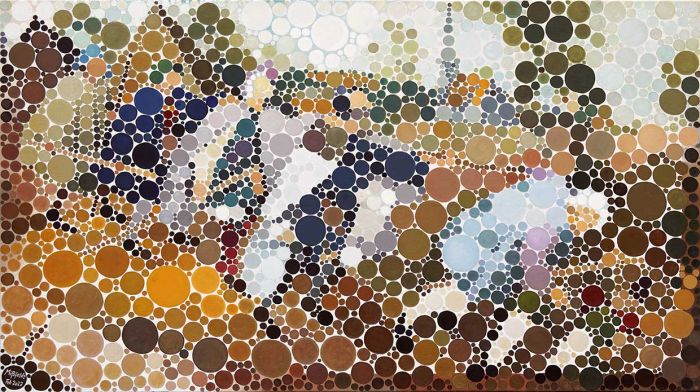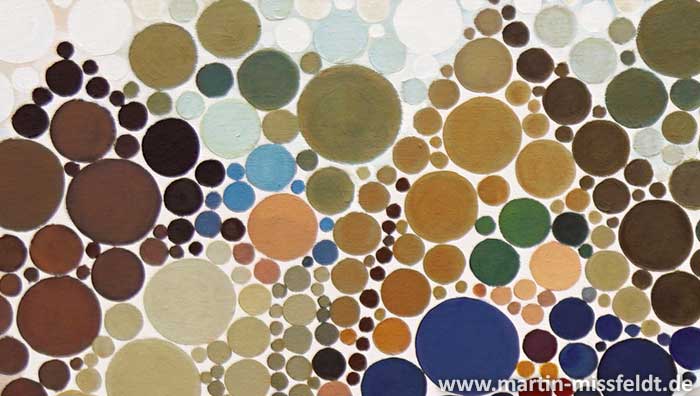Image Description
This oil painting was inspired by the famous painting "The Fall of the Blind" (also "The Parable of the Blind") by Pieter Bruegel the Elder. It shows six blind beggars who are in a falling motion. The person on the right has already fallen into a dark pit - and because they are all clinging to each other, each is carrying the other down with them into the depths.
I painted the picture again in the neo-poiuntilistic style. It consists of finely differentiated colored dots, reminiscent of color charts once devised by the Japanese ophthalmologist Shinobu Ishihara to diagnose a red-green weakness of the eye. For me, however, it is not (anymore) about color vision deficiencies, but rather about visual acuity.
I wear glasses. I noticed while painting some time ago that my visual erafhrung is completely different when I look at my own paintings with or without glasses. Normally, when you take off your glasses as a nearsighted person, the visual image blurs. Depending on the strength up to the unrecognizability. This is of course also the case with me with approx. -3.5 diopters. But: it is different with my dot images. They become sharper - or: better recognizable, when I take off the glasses. For me, the effect is greatest at a distance of about 3-4 meters. At this distance, the white spaces become blurred and the colored dots blend into a coherent surface. As a result, the image subject becomes much clearer. Blurred, to be sure, but clear. And then visual memory takes control of the image. I suddenly recognize parts in the blurred color mass that are not there at all. Yet I see them, simply because I remember them.
The first time I became aware of the whole thing was when I had painted watercolors in the neo-pointillist style, which were also based on art historical models. However, since these watercolors were smaller, I checked them much less often without glasses, as I usually do with large oil paintings. But at some point I put my watercolors up on the bulletin board and looked at them, and that's when it struck me. The images became sharper and details became visible that weren't there. I think the effect was particularly strong with Hieronymus Holzschuher. Crazy ...
Why this motif? The fall of the blind by Pieter Bruegel the Elder. (1568) is highly topical. Science is transfigured by many into a religion, with doomsday scenarios, promises of salvation, warnings of heretics and prophets. On the other hand, there are the skeptics and those of other faiths. Then as now, one has to be careful to keep an eye on things. Those who do not look - and think - run the risk of following other blind people as the blind and being dragged into the abyss. In the background, the church disappears into obscurity ...






